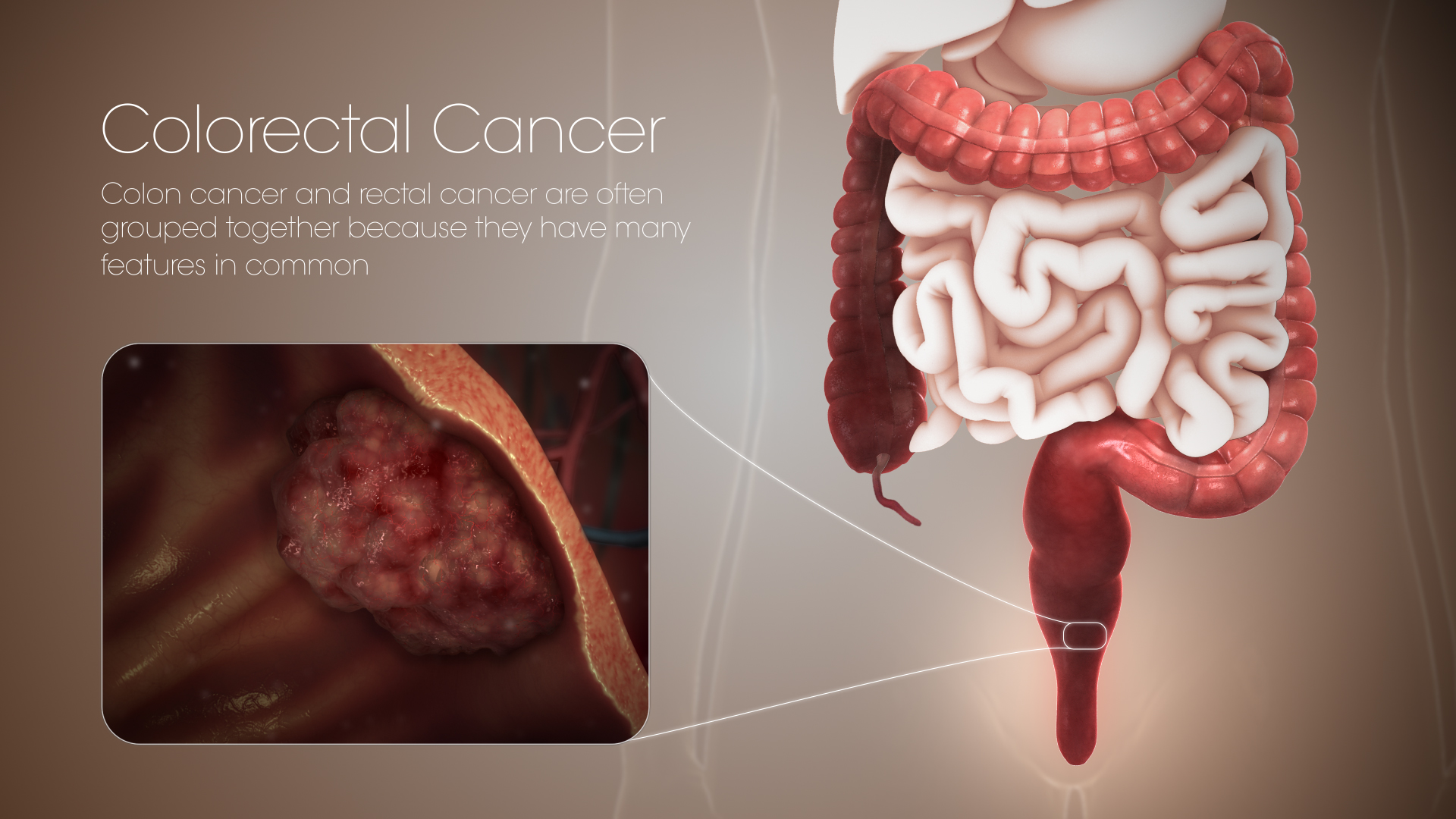Any cancer that affects the colon and the rectum is called colorectal cancer.

It is also known as bowel cancer, colon cancer and rectal cancer, depending on where it starts. They have many common features and that is why colon and rectum cancer are grouped together. The occurrence of colorectal cancer is due to the abnormal or out of control growth of some of the cells that line the colon or the rectum. These abnormal cells form a tumor, which is the cancer. One in 21 men and 1 in 23 women in the US are likely to get colorectal cancer in their lifetime. Colorectal cancer is responsible for being the second highest cancer that women die from and third highest cause of death from cancer in men.
Symptoms
Early stage of colorectal cancer is the easiest to treat but unfortunately most of the times there are no symptoms at this stage. When symptoms start to show, the most likely ones are:
- Changes in bowel movements, diarrhoea or constipation
- Dark patches of blood in the stools
- Bleeding or cramping in the rectum
- Bloating and discomfort in the abdomen
- Loss of appetite and weight loss
- Fatigue
- Pelvic pain
- Feeling of fullness in spite of not eating
- Lump in the abdomen or back passage
- Unexplained iron deficiency
Causes
Several factors increase the risk of developing colorectal cancer but researchers have not found any specific cause for resulting in cancer. There is a strong link between colorectal cancer and lifestyle habits like diet, exercise and weight. Obesity, smoking, alcohol consumption, lack of physical activity and certain types of diets which are high in red meat and processed meat all increase the risk for developing colorectal cancer. Old age, family history, presence of polyps in the colon or the rectum and inflammatory bowel disease are also risk factors that could contribute to the cause.
Treatment
Treatment of colorectal cancer usually depends on the stage at which the cancer is diagnosed.
The various stages of colorectal cancer are:
- Stage 0: This is the earliest stage and the cancer is still within the inner layer of the colon or the rectum
- Stage 1: In this stage, the cancer has spread beyond the inner layer, but not beyond the walls of the colon or the rectum
- Stage 2: In this stage the cancer has spread beyond the walls but not yet spread to the lymph nodes.
- Stage 3: The cancer spreads to the nearby lymph nodes by this stage but not yet spread to the other parts of the body.
- Stage 4: By this stage the cancer spreads to the other parts and organs of the body.
The most common types of treatment could be radiation therapy, chemotherapy, targeted therapy, immunotherapy, surgery, amongst other options.
To reduce the risk of developing colorectal cancer, certain lifestyle measures should be undertaken. Regular screening of people above age 50 years, people who have had this cancer earlier, people who have a family history of this cancer, or have Crohn’s disease, should be carried out. Keeping weight to a healthy level is important. Regular exercise should be a must. Following a nutritional diet which includes plenty of fresh fruits, vegetables, fibre, whole grains, healthy fats like olive oil and avocado while keeping red and processed meats to a minimum are quite important.
Disclaimer: The information in no way constitutes, or should be construed as medical advice. Nor is the above article an endorsement of any research findings discussed in the article an endorsement for any of the source publications.
Sources-
- https://www.cancer.org/cancer/colon-rectal-cancer/about/what-is-colorectal-cancer.html
- https://www.medicalnewstoday.com/articles/155598.php
- https://www.mayoclinic.org/diseases-conditions/colon-cancer/symptoms-causes/syc-20353669
- https://www.cancer.gov/types/colorectal
Rectum is the last part of the large intestine in human body.
Read More..
When a malignant tumor develops from the cells that make up the bones of the body, it is called bone cancer. This type of cancer is primary bone cancer and is true bone cancer. When cancer originates elsewhere in the body and spreads to the bones, it is secondary bone cancer and the treatment is different than that of primary bone cancer.
Read More..











